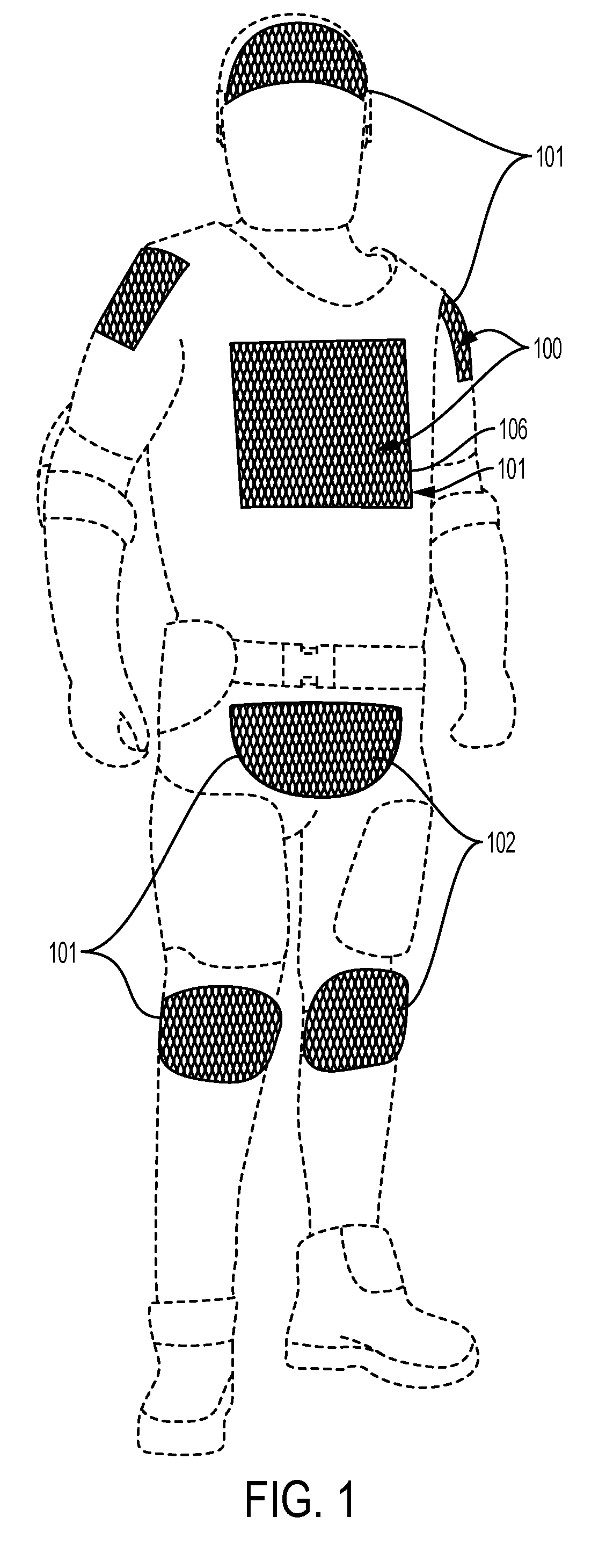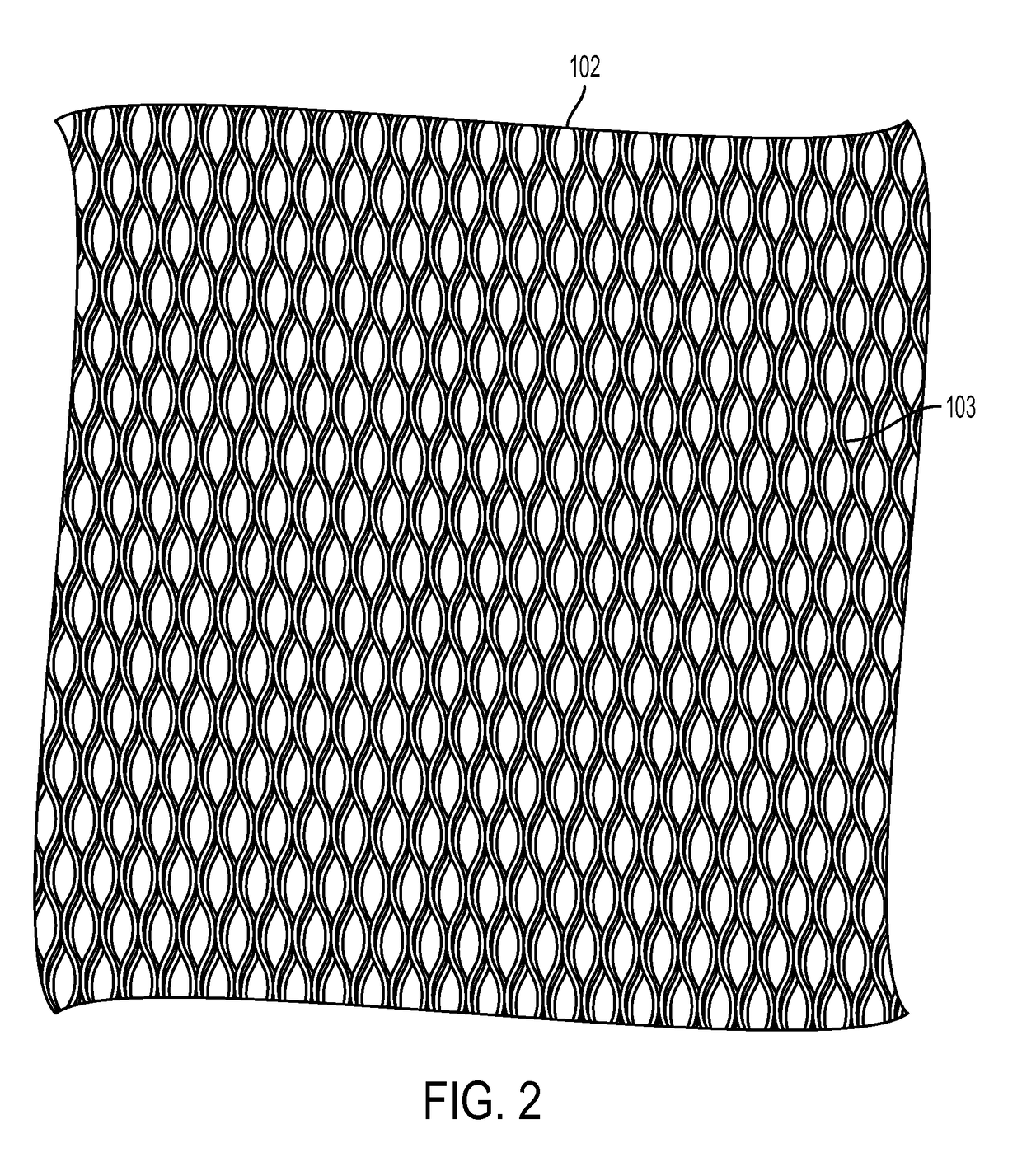Thermoregulatory impact resistant material
a technology of impact resistance and thermal insulation, which is applied in the field of thermal insulation impact resistance materials, can solve the problems of limiting the ability of these products, not providing sufficient energy absorption, and preventing some level of injury, so as to improve the thermal regulation of the user and increase the performance and function
- Summary
- Abstract
- Description
- Claims
- Application Information
AI Technical Summary
Benefits of technology
Problems solved by technology
Method used
Image
Examples
Embodiment Construction
[0036]The present invention relates to a protective, thermoregulatory impact resistant material which is used in a wearable article. The wearable article enhances thermal regulation of the user, provides protection to the user by means of pressure and energy absorption, and acts as a platform for technologies that increase performance and function when worn by the user.
[0037]Thermoregulation (temperature control) is part of a homeostatic mechanism that keeps an organism at optimum operating temperature. In humans, the average internal temperature is 37.0° C. (98.6° F.). A human being can only tolerate a variation of around 4° C. in internal body temperature without physical and mental performances being impaired. Further, research has shown an optimal office temperature between 21° C. to 23° C. provides the best temperature for maximum office worker productivity. These same studies demonstrate that just a few degrees difference can have a 5% or more degradation in productivity. Thus...
PUM
| Property | Measurement | Unit |
|---|---|---|
| weight | aaaaa | aaaaa |
| surface area | aaaaa | aaaaa |
| temperature | aaaaa | aaaaa |
Abstract
Description
Claims
Application Information
 Login to View More
Login to View More - R&D
- Intellectual Property
- Life Sciences
- Materials
- Tech Scout
- Unparalleled Data Quality
- Higher Quality Content
- 60% Fewer Hallucinations
Browse by: Latest US Patents, China's latest patents, Technical Efficacy Thesaurus, Application Domain, Technology Topic, Popular Technical Reports.
© 2025 PatSnap. All rights reserved.Legal|Privacy policy|Modern Slavery Act Transparency Statement|Sitemap|About US| Contact US: help@patsnap.com



